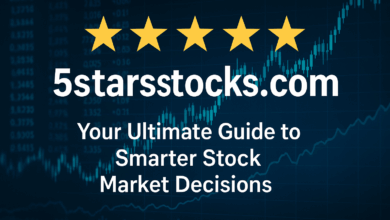PLG Supplies: Your Complete Guide to Essential PLG Tools and Resources

In today’s rapidly evolving business world, Product-Led Growth (PLG) has emerged as one of the most effective strategies for driving sustainable business growth. Unlike traditional sales-led or marketing-led models, PLG puts the product itself at the center of the customer acquisition, expansion, and retention strategy. As more businesses adopt this approach, the demand for PLG supplies—the tools, resources, and strategies that empower PLG teams—has grown significantly.
In this article, we’ll explore what PLG supplies are, why they matter, the essential tools you should have in your toolkit, and how they can help your business achieve long-term growth.
What Are PLG Supplies?
The term PLG supplies refers to the collection of tools, software, platforms, and resources that support Product-Led Growth initiatives. These supplies help product managers, growth marketers, customer success teams, and developers to deliver value directly through the product, analyze user behavior, optimize onboarding, and encourage product adoption without heavy reliance on traditional sales processes.
PLG supplies can range from product analytics tools and customer feedback platforms to onboarding software and in-app messaging systems. Together, these resources create a seamless, user-driven experience designed to convert prospects into loyal customers.
Why Are PLG Supplies Important?
As competition grows and customers become more self-reliant in their buying decisions, businesses need to provide immediate, clear value through their products. PLG supplies enable organizations to:
-
Understand user behavior: By tracking product usage and engagement metrics.
-
Optimize user onboarding: Through tailored onboarding flows and guided tutorials.
-
Encourage product adoption: With in-app messaging, tooltips, and feature highlights.
-
Reduce churn: By identifying friction points and proactively addressing them.
-
Drive upsells and expansion: By highlighting premium features at the right moments.
Without the right PLG supplies, businesses risk falling behind in delivering the kind of product experience modern customers expect.
Essential PLG Supplies for Every Product Team
If you’re implementing or scaling a Product-Led Growth strategy, there are several types of PLG supplies that should be part of your toolkit:
1. Product Analytics Tools
These tools provide insights into how users interact with your product, helping you identify what’s working, where users drop off, and how to improve the experience.
-
Examples: Mixpanel, Amplitude, Heap
-
Key Features: Funnels, cohort analysis, retention reports, A/B testing
2. User Onboarding Platforms
Onboarding is critical in the PLG model. These tools help guide new users through product features and reduce time-to-value.
-
Examples: Userpilot, Appcues, WalkMe
-
Key Features: In-app tours, checklists, modals, progress tracking
3. In-App Messaging and Feedback Tools
These allow you to engage users at key moments, gather feedback, and address user concerns within the product itself.
-
Examples: Intercom, Pendo, Chameleon
-
Key Features: In-app surveys, announcements, live chat, feedback forms
4. Customer Data Platforms (CDPs)
CDPs centralize customer data from various touchpoints, enabling personalized experiences and targeted messaging based on user behavior.
-
Examples: Segment, Hull, RudderStack
-
Key Features: Real-time data syncing, user segmentation, data enrichment
5. Feature Flagging and Experimentation Tools
These supplies allow teams to test new features, roll out updates incrementally, and make data-driven decisions without deploying risky changes.
-
Examples: LaunchDarkly, Optimizely, Split.io
-
Key Features: A/B testing, canary releases, feature toggles, experimentation analytics
How to Choose the Right PLG Supplies
Selecting the right PLG supplies depends on your product’s complexity, target audience, and business goals. Here are some tips for making the right choices:
-
Identify your core PLG objectives: Is your goal to improve onboarding, increase product adoption, or reduce churn? Focus your tools around these priorities.
-
Consider integration capabilities: Choose tools that easily integrate with your existing tech stack to ensure seamless data flow.
-
Prioritize user experience: Opt for supplies that enhance, rather than complicate, the product experience for your users.
-
Start small and scale: Begin with essential tools and expand your PLG toolkit as your strategy matures.
The Future of PLG Supplies
As Product-Led Growth continues to shape the SaaS and digital product landscape, the market for PLG supplies will only grow more diverse and sophisticated. Emerging technologies like AI-driven analytics, personalized onboarding experiences, and predictive customer behavior tools are set to become mainstream components of the PLG supply kit.
Organizations that invest in the right PLG supplies today will be better positioned to offer exceptional product experiences, increase user satisfaction, and drive organic growth without heavy marketing or sales overhead.
Read More: JonathonSpire: Navigating the World of Social Media Growth Tools
Final Thoughts
In a world where the product itself is the primary growth engine, having the right PLG supplies is not just an option—it’s a necessity. From analytics and onboarding to in-app messaging and experimentation, these tools empower teams to deliver value through every user interaction.
If you’re considering adopting a Product-Led Growth strategy or looking to optimize your current approach, start by evaluating your PLG supply toolkit. With the right resources in place, you can unlock the full potential of your product and build a business that grows by delighting its users.



